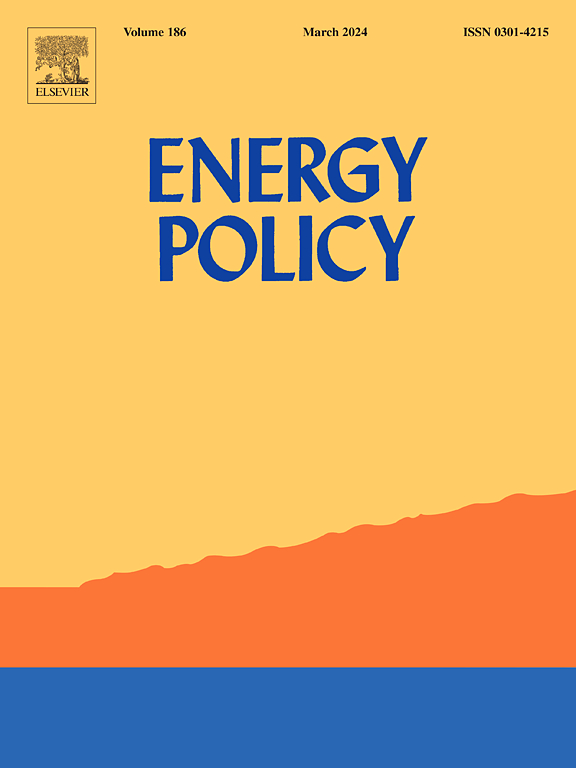电动汽车市场动态:政策、基础设施和消费者行为的多代理方法
IF 9.2
2区 经济学
Q1 ECONOMICS
引用次数: 0
摘要
向可持续交通的过渡是减少碳排放的关键组成部分。然而,电动汽车的采用受到各种利益相关者(包括消费者、能源公司和政府机构)之间复杂的相互作用的影响。本文提出了一个基于智能体的电动汽车采用模型(ABM)和一个多智能体系统(MAS)来模拟和分析电动汽车市场中的这些相互作用。通过基于年份的时间模拟,该框架提供了驱动电动汽车采用、消费者满意度和能源基础设施投资经济可行性的因素的见解。我们的ABM方法的一个关键优势是它能够捕捉由异质代理之间的局部相互作用产生的紧急动态。这些微观层面的行为共同形成了一个复杂的生态系统,可以影响政府和企业等更高层次利益相关者的决策过程,这是在更集中的、非基于主体的方法中通常无法解决的一个方面。我们通过模拟一个中等城市(17万居民)的电动汽车市场来测试我们的模型。在几个实验场景中,该系统展示了异质代理类型之间的局部战略互动如何产生紧急的全局结果和集体行为模式。例如,充电速度和充电站可用性的改进可以增强用户体验,促进电动汽车的广泛采用。同样,优化加油站配置可以影响司机的决策,从而提高能源供应商的盈利能力。该框架捕捉了新兴市场的行为,并作为评估各种政策和市场条件影响的有力工具,为可持续交通解决方案的明智决策提供支持。本文章由计算机程序翻译,如有差异,请以英文原文为准。
Electric vehicle market dynamics: A multi-agent approach to policy, infrastructure, and consumer behavior
The transition to sustainable mobility is a critical component to reducing carbon emissions. However, the adoption of electric vehicles (EVs) is influenced by complex interactions among various stakeholders, including consumers, energy companies, and government bodies. This paper presents an agent-based model (ABM) of electric vehicle adoption and a multi-agent system (MAS) implemented to simulate and analyze these interactions within the EV market. By means of year-based temporal simulations, the framework provides insights into the factors driving EV adoption, consumer satisfaction, and the economic viability of energy infrastructure investments. A key strength of our ABM approach is its ability to capture the emergent dynamics arising from local interactions among heterogeneous agents. These micro-level behaviors collectively form a complex ecosystem that can influence the decision-making processes of higher-level stakeholders such as governments and firms, an aspect that is typically unaddressed in more aggregated, non-agent-based approaches. We test our model by simulating the EV market of a mid-sized city (170,000 inhabitants). Across several experimental scenarios, the system demonstrates how local strategic interactions among heterogeneous agent types give rise to emergent global outcomes and collective behavioral patterns. For example, improvements in charging speed and station availability can enhance user experience and facilitate broader EV adoption. Likewise, optimizing service station configurations can influence driver decision-making, leading to increased profitability for energy providers. This framework captures emerging market behaviors and serves as a robust tool to evaluate the impacts of various policies and market conditions, supporting informed decisions toward sustainable transportation solutions.
求助全文
通过发布文献求助,成功后即可免费获取论文全文。
去求助
来源期刊

Energy Policy
管理科学-环境科学
CiteScore
17.30
自引率
5.60%
发文量
540
审稿时长
7.9 months
期刊介绍:
Energy policy is the manner in which a given entity (often governmental) has decided to address issues of energy development including energy conversion, distribution and use as well as reduction of greenhouse gas emissions in order to contribute to climate change mitigation. The attributes of energy policy may include legislation, international treaties, incentives to investment, guidelines for energy conservation, taxation and other public policy techniques.
Energy policy is closely related to climate change policy because totalled worldwide the energy sector emits more greenhouse gas than other sectors.
 求助内容:
求助内容: 应助结果提醒方式:
应助结果提醒方式:


